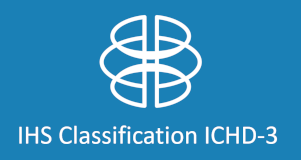6.2.4.3 Persistent headache attributed to past non-traumatic acute subdural haemorrhageHartmut Gobel2018-02-01T09:13:00+00:00
6. Headache attributed to cranial or cervical vascular disorder
- 6.1 Headache attributed to cerebral ischaemic event
- 6.2 Headache attributed to non-traumatic intracranial haemorrhage
- 6.2.1 Headache attributed to non-traumatic intracerebral haemorrhage
- 6.2.2 Acute headache attributed to non-traumatic subarachnoid haemorrhage (SAH)
- 6.2.3 Acute headache attributed to non-traumatic acute subdural haemorrhage (ASDH)
- 6.2.4 Persistent headache attributed to past non-traumatic intracranial haemorrhage
- 6.3 Headache attributed to unruptured vascular malformation
- 6.3.1 Headache attributed to unruptured saccular aneurysm
- 6.3.2 Headache attributed to arteriovenous malformation (AVM)
- 6.3.3 Headache attributed to dural arteriovenous fistula (DAVF)
- 6.3.4 Headache attributed to cavernous angioma
- 6.3.5 Headache attributed to encephalotrigeminal or leptomeningeal angiomatosis (Sturge Weber syndrome)
- 6.4 Headache attributed to arteritis
- 6.5 Headache attributed to cervical carotid or vertebral artery disorder
- 6.6 Headache attributed to cranial venous disorder
- 6.7 Headache attributed to other acute intracranial arterial disorder
- 6.8 Headache attributed to genetic vasculopathy
- 6.8.1 Headache attributed to Cerebral Autosomal Dominant Arteriopathy with Subcortical Infarcts and Leukoencephalopathy (CADASIL)
- 6.8.2 Headache attributed to Mitochondrial Encephalopathy, Lactic Acidosis and Stroke-like episodes (MELAS)
- 6.8.3 Headache attributed to Moyamoya angiopathy (MMA)
- 6.8.4 Migraine-like aura attributed to cerebral amyloid angiopathy (CAA)
- 6.8.5. Headache attributed to syndrome of retinal vasculopathy with cerebral leukoencephalopathy and systemic manifestations (RVCLSM)
- 6.8.6 Headache attributed to other chronic intracranial vasculopathy
- 6.9 Headache attributed to pituitary apoplexy
- Bibliography
